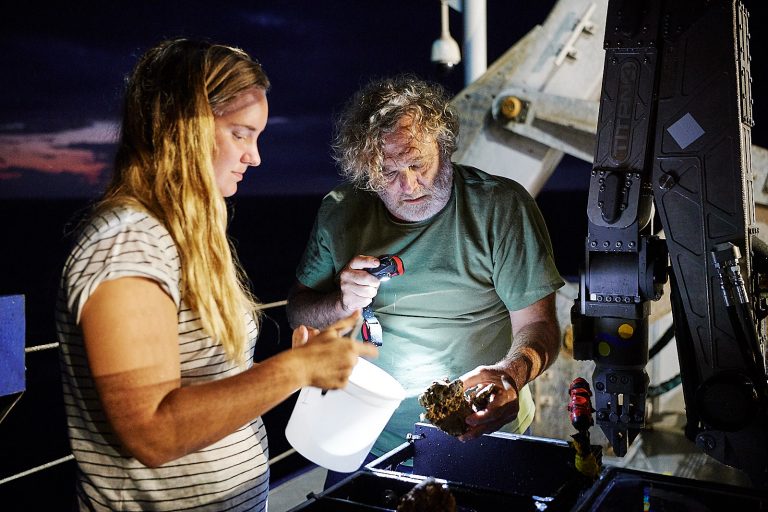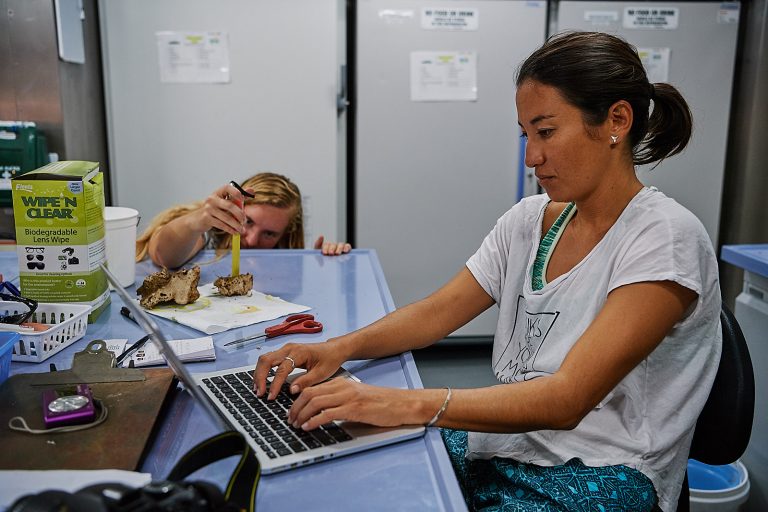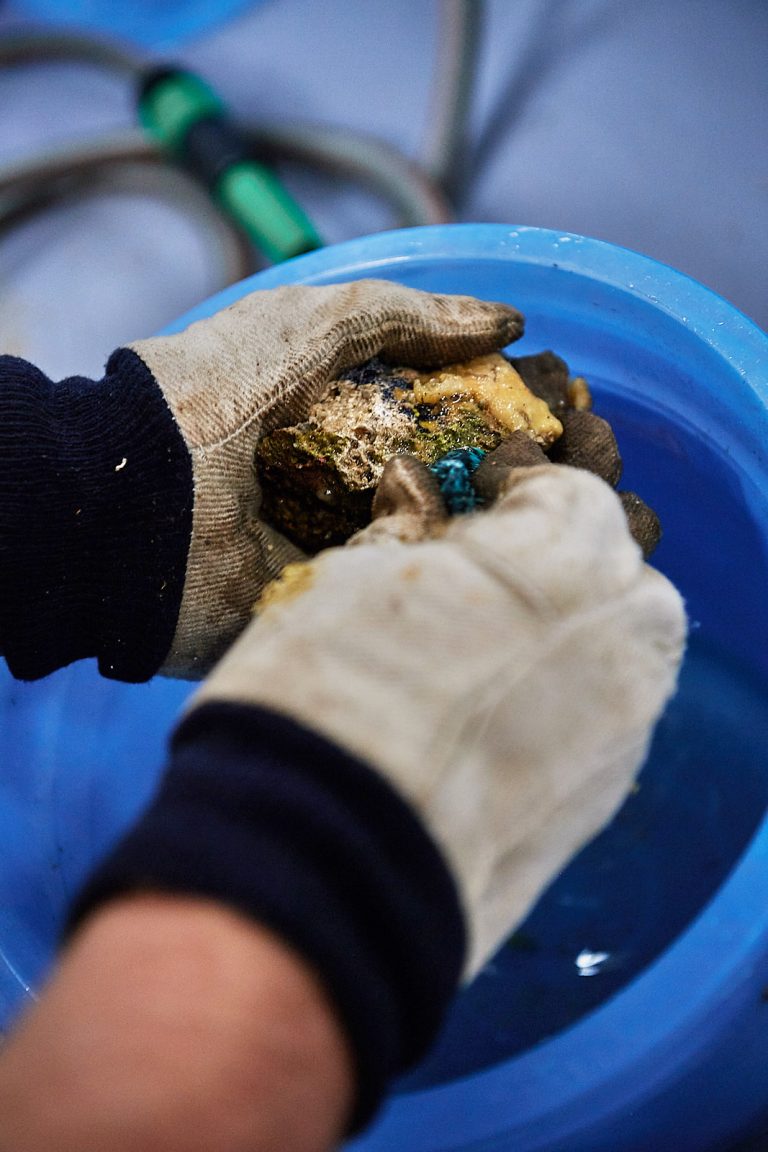Twenty thousand years ago, the ice-covered earth started melting, creating relatively large changes in sea level. Today the earth is still warming, glaciers are still melting, and the sea is still rising. Thankfully, with the study of the past, data can help predict the future. The best way to understand ancient sea level change is to study materials formed during that time. We at the University of Hawai’i Manoa (UHM) are working on fossilized coral reefs formed during the Last Glacial Maximum and subsequent sea level rise to understand climate change of the past.
As a Master’s student at UHM working under Dr. Ken Rubin, I use high-precision geochemical dating techniques to determine when these corals formed. Because of previous studies, we know quite a bit about sea level change at this time in geologic history. But since the ocean does not rise the same everywhere, adding a study in a new place with a different history can only help better our overall understanding.

Coral Studies
The corals we collect using the remotely operated vehicle (ROV) SuBastian have been under about 100m of seawater for about 10,000 years, so they have quite a bit of extra growth due to other mesophotic organisms. They require extensive cleaning and logging before we can start analyzing. While on the ship, we clean off the outside of the samples and saw them into pieces. We will collect size, morphology, biology, and physical description data.

We will take the collected samples back to our lab at the University of Hawai’i and start on our analysis of them. Using a mass spectrometer, we can measure the amount of uranium and thorium in each coral and use the half-life equation to calculate the age. As corals grow, they can incorporate uranium into their skeleton. Once they die, the uranium slowly decays to thorium. The ratio in which these elements are counted will tell us how long the coral has been dead. The more uranium the younger the coral; the more thorium the older. Depending on the depth and area of the coral, we can calculate a geologic record for about 10,000 years starting at the Last Glacial Maximum.

Deciphering Meaning
Along with the specific dates, we use coral morphology and species to understand the whole reef formation. The main reef forming corals in Hawai’i grow within 5-30m below sea level. There is one specifically that only grows within the first 5m. This precise growth range can help us pinpoint the sea level within ± 5m. The morphologies, such as encrusting or stout branching, can tell us about the sea state at that time of growth: Smaller, more delicate morphologies describe calmer seas. Conversely, encrusting morphologies lean towards rough sea and high wave energy.
Putting together all the data we collect, we are able to understand what this area was like since the Last Glacial Maximum. We can understand the rate and magnitude at which sea level rose. Farther down the road, we will be able to fit this information with other studies of fossilized coral reefs and sea level change to help predict and prepare for future sea level rise and climate change.

